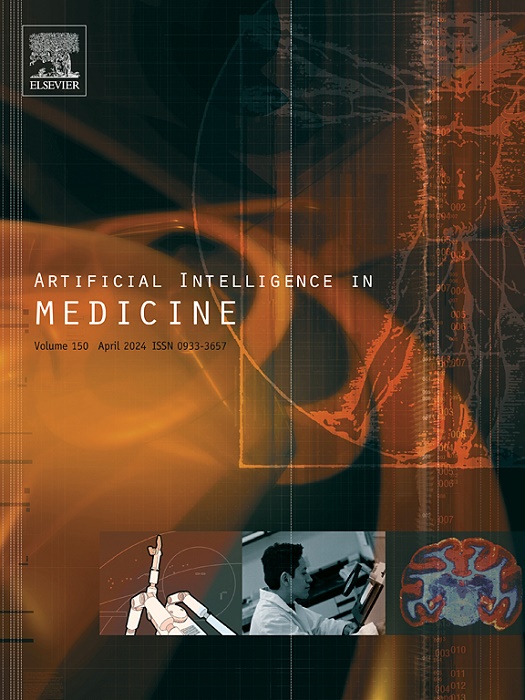客观评价乳腺癌美容效果的标签独立框架
IF 6.2
2区 医学
Q1 COMPUTER SCIENCE, ARTIFICIAL INTELLIGENCE
引用次数: 0
摘要
随着乳腺癌治疗领域的进步,术后美容结果的评估越来越重要,因为它对患者的生活质量有重大影响。然而,评估乳房美容是具有挑战性的,因为专家标签固有的主观性。在这项研究中,我们提出了一种新的自动化方法,即注意力引导去噪扩散异常检测(AG-DDAD),旨在评估手术后的乳房美容。该模型解决了传统监督学习和现有异常检测模型的局限性。我们的方法利用无标签蒸馏的注意机制和自监督视觉转换器,结合扩散模型,实现了高质量的图像重建和判别区域的精确转换。通过在未标记的数据上训练扩散模型,以正常的宇宙观为主,采用无监督异常检测的角度对宇宙观进行自动评分。真实世界的数据实验证明了我们的方法的有效性,为美容评估提供了视觉上吸引人的表示和可量化的分数。与常用的基于规则的程序相比,我们的全自动方法消除了手动注释的需要,并提供了客观的评估。此外,我们的异常检测模型展示了最先进的性能,在准确性方面超过了现有的模型。在乳房美容的范围之外,我们的研究代表了医学领域中无监督异常检测的重大进步,从而为未来的研究铺平了道路。本文章由计算机程序翻译,如有差异,请以英文原文为准。
Label-independent framework for objective evaluation of cosmetic outcome in breast cancer
With advancements in the field of breast cancer treatment, the assessment of postsurgical cosmetic outcomes has gained increasing significance owing to its substantial impact on patients’ quality of life. However, evaluating breast cosmesis is challenging because of the inherently subjective nature of expert labeling. In this study, we present a novel automated approach, attention-guided denoising diffusion anomaly detection (AG-DDAD), designed to assess breast cosmesis following surgery. The model addresses the limitations of conventional supervised learning and existing anomaly detection models. Our approach leverages the attention mechanism of distillation with no labels and a self-supervised vision transformer, combined with a diffusion model, to achieve high-quality image reconstruction and precise transformation of discriminative regions. By training the diffusion model on unlabeled data, predominantly with normal cosmesis, we adopted an unsupervised anomaly detection perspective to automatically score the cosmesis. Real-world data experiments demonstrated the effectiveness of our method, providing visually appealing representations and quantifiable scores for cosmesis evaluation. Compared with commonly used rule-based programs, our fully automated approach eliminates the need for manual annotations and offers an objective evaluation. Moreover, our anomaly detection model exhibits state-of-the-art performance, surpassing existing models in terms of accuracy. Beyond the scope of breast cosmesis, our research represents a significant advancement in unsupervised anomaly detection within the medical domain, thereby paving the way for future investigations.
求助全文
通过发布文献求助,成功后即可免费获取论文全文。
去求助
来源期刊

Artificial Intelligence in Medicine
工程技术-工程:生物医学
CiteScore
15.00
自引率
2.70%
发文量
143
审稿时长
6.3 months
期刊介绍:
Artificial Intelligence in Medicine publishes original articles from a wide variety of interdisciplinary perspectives concerning the theory and practice of artificial intelligence (AI) in medicine, medically-oriented human biology, and health care.
Artificial intelligence in medicine may be characterized as the scientific discipline pertaining to research studies, projects, and applications that aim at supporting decision-based medical tasks through knowledge- and/or data-intensive computer-based solutions that ultimately support and improve the performance of a human care provider.
 求助内容:
求助内容: 应助结果提醒方式:
应助结果提醒方式:


